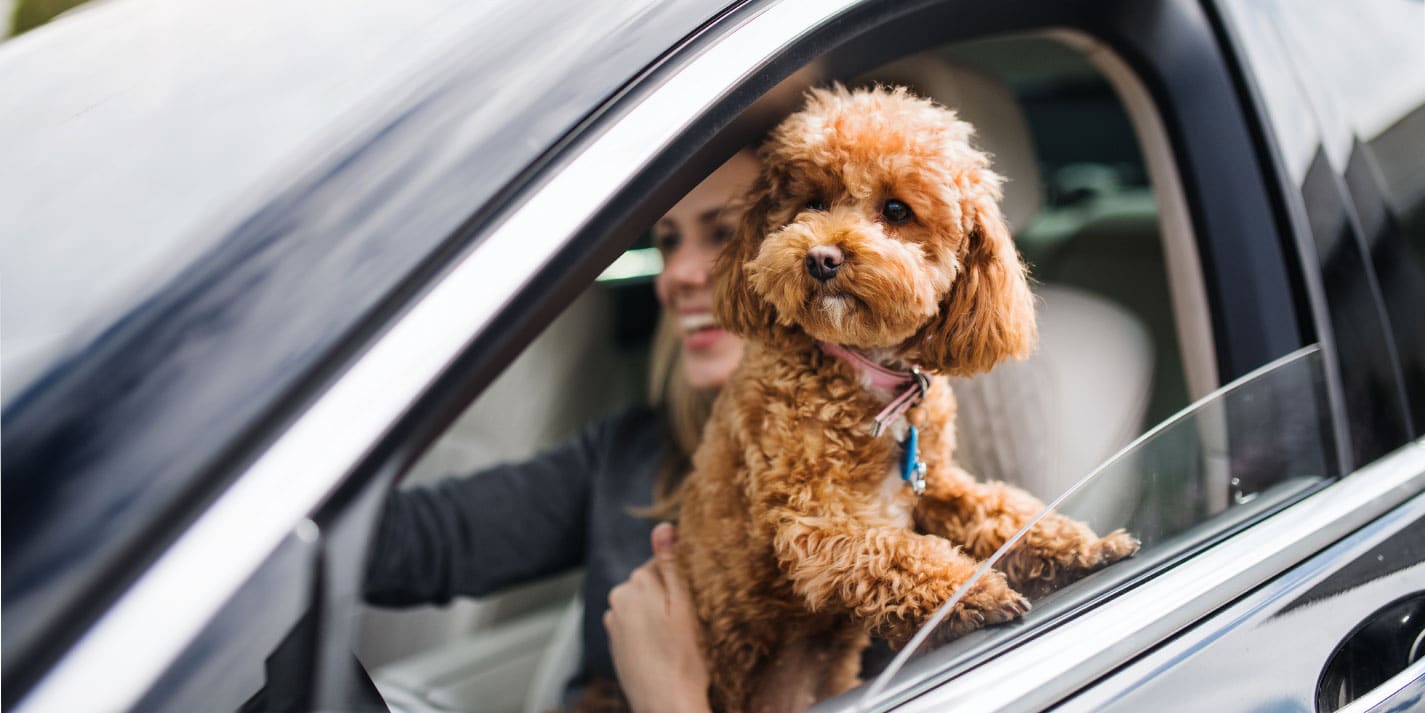How are veterinarians personalizing the customer experience in the COVID-19 era?
We spoke to Steve Manyak of Pine Animal Hospital about the ways his practice is meeting the challenges of finding new clients, promoting a brand, minimizing no-shows, and keeping customers safe in today’s world. The conversation is part of Weave’s In the Trenches, a new webinar series featuring in-depth discussions with industry experts.
Dr. Manyak established Pine Animal Hospital eight years ago in Long Beach, CA. He feels strongly about the quality of medicine and the quality of care his practice has provided since 2013. Because of the growth and success Pine Animal Hospital has seen, Dr. Manyak says they’re ready to jump from being a three-doctor to a four-doctor hospital.
Although Long Beach is nationally known for celebrities like Snoop Dogg, Dr. Manyak sees an incredibly diverse and progressive group of pet owners each day. They come from Orange County suburbs, nearby beach towns, and the urban highrises of downtown Long Beach. Because the hospital serves such a diverse array of customers, Dr. Manyak finds himself utilizing a broad range of ideas for helping his practice flourish.
→Listen To the Insightful Interview With Dr. Manyak Below ↓↓
Here are 19 of Dr. Manyak’s best ideas for personalizing the client experience:
1. Use online review sites
Dr. Manyak says online review sites like Google and Yelp are perhaps the most consistent source of new customers for his practice. The vast majority of consumers read online reviews before setting foot in a new business. Practices hoping to attract new clients should register on popular sites, ask their existing customers for reviews, and aim to gather as many positive reviews as possible.
2. Embrace negative reviews
In the process of collecting online reviews and bolstering your online reputation, your practice will inevitably encounter negative reviews. According to Dr. Manyak, negative reviews aren’t a problem, but an opportunity. Negative reviews allow your practice to demonstrate its ability to handle mistakes and problems in a professional way. " Weave is an awesome service and has always been something that makes the day to day in the office easier for those up front. Puts a name to a face when they call and let’s me communicate with patients on such an easy and personal level. Would highly recommend Weave to anyone!"- Weave Customer
It's the Personal Touches that Make Your Practice Stand Out
3. Be proactive and respond to reviews
How do you respond to negative reviews? By personally approaching reviewers, asking how to resolve their concerns, and offering to take responsibility for legitimate failures or shortcomings. If negative reviews are unnecessarily offensive or come from fake accounts, it’s important that you report them to the site administrators of Google or Yelp.

Positive reviews should bring out proactive responses from your team as well. Simply thank customers for sharing their opinion of your business. Ask your best reviewers for permission to publish their reviews on your website or share them on social media. However, don’t offer financial or tangible rewards for online reviews.
4. Have a unique brand
One of Dr. Manyak’s points of emphasis during the discussion is the value of developing a brand that’s unique to your practice. In the veterinary industry, Dr. Manyak finds that many doctors spend so much time focusing on medicine that they neglect the business side of their practice.
Caring for animals is of course the primary responsibility of a vet, but if your hospital forgets about its branding, it disappears into a list of names and practices that are indistinguishable from each other.
5. Think about what makes you different
When Dr. Manyak goes about developing the brand of Pine Animal Hospital, he asks: why would someone choose your practice? This simple question helps him look for the types of strategies and choices that differentiate his hospital from competitors.
6. Personalize your website
To ensure that the content on his hospital’s website is personalized and approachable, Dr. Manyak actually writes the content himself. Since 2013, the look of the website has evolved and gone through a number of phases, but the emphasis on personalized messaging continues.

Some vets may not be up to the task of creating their own content. Find someone in the office with the writing capacity to capture your practice’s style in its messaging. Keeping your messaging in-house will boost the personal nature of your marketing.
7. Run your own social media
Just like the website, the social media of Pine Animal Hospital is managed by their own employees, not an advertising company. Dr. Manyak says this approach to social media is powerful because it’s one of the few ways to set your brand apart in a competitive online space. Again, look for the right office manager or receptionist to run your various accounts.
8. Change with the times
The COVID-19 pandemic initially caused some problems for Pine Animal Hospital. The lockdowns and stay-at-home measures in southern California created a boom in pet ownership. An influx of new patients set up dozens of first-time appointments with Dr. Manyak’s hospital, but 30-40% of these appointments were falling through. His team had to quickly adjust to this wave of new pet owners.
9. Brainstorm as a team
Dr. Manyak didn’t rely exclusively on his own problem-solving to meet the challenges of COVID-19. Instead, he sat down with his office manager and receptionist to develop a game plan for eliminating no-shows from their schedule. Together, they arrived at a relatively simple solution that worked for their particular clientele base. Brainstorming with your team is a worthy activity to consider doing regularly, and should include everyone at your practice. If you have staff members working hybrid, consider using an online whiteboard to still get them involved.

10. Incentivize first appointments
The team at Pine Animal Hospital decided to ask new clients to make a $25 deposit prior to their first appointments with the practice. Once clients provided the deposit, they were incentivized to show up for their pet’s first appointment.
This novel solution allowed Dr. Manyak’s practice to cut its no-show rate down to just 5%. By being willing to try new approaches during difficult times, Pine Animal Hospital is able to keep its schedule full and gain a competitive edge.
11. Offer virtual consultations
Another way Dr. Manyak’s hospital has responded to COVID-19 is offering virtual consultations to its customers. They already had the majority of technology in place to move away from in-person meetings, so switching to virtual meetings with pet owners was mostly a matter of making sure customers understood their protocol and helping them understand the reasons for the change.
12. Establish curbside waiting rooms
Along with virtual consultations, Pine Animal Hospital has implemented curbside waiting rooms. In a way, Dr. Manyak says, the parking lot has become their exam room. Doctors are able to socially distance and resolve client concerns effectively once curbside waiting rooms are established.

13. Text with your customers
Before appointments, Dr. Manyak’s staff asks pet owners to text them upon arriving in their parking lot. Upon receiving a check-in text from customers, the front desk team goes through the process of pulling their information and pet history and sending out the right employee to greet them. A unified communication system makes it easy to set up curbside waiting rooms with your customers.
14. Post updates across channels
As your practice adjusts to the ever-changing rules and regulations associated with COVID-19, be sure to share these adjustments across your various channels. Two-way texting is a tool we’ve already mentioned. Sharing updates on calls, in emails, and over social media will keep your new patients informed and your staff safe from potential infection.
15. Share electronic forms
Pine Animal Hospital is also taking advantage of electronic forms to promote social distancing. They had the option to use digital forms before the pandemic, but the events of 2020 have pushed their team toward using e-forms as much as they can. Electronic forms are not only effective for onboarding clients and their pets, but for doing COVID-19 screenings prior to appointments.
16. Flip on the technology switch
One of the main lessons learned by Dr. Manyak and his team over the last year is that they have all the tools they need to function in today’s marketplace. They simply needed to flip the switch and reorient to more digital strategies. After you get a basic framework in place, it becomes much easier to explore alternative ways to employ communication technology.
→Watch How Technology Like Texting Can Help Your Office ↓↓
17. Keep the momentum going
Because Pine Animal Hospital had the right communication tools, they’ve almost seamlessly adjusted to the conditions created by the pandemic. They’re seeing the same amount of customers and keeping their schedule packed with appointments. Now their quest is to keep the momentum going and further optimize their strategies.
18. Find your tech-savvy employees
When it comes to using tools like smartphones, online reviews, and social media, many veterinarians and their staff might be slightly intimidated. That’s not a problem, says Dr. Manyak. There’s someone in every office with enough experience and exposure to these newer communication technologies to get you started off on the right foot. Seek out the experts in your practice and empower them to personalize your customer communication.
19. Don’t be afraid to take risks
What keeps veterinary practices from succeeding in many cases, according to Dr. Manyak, is an aversion to risk. Doctors and their staff see how previous generations of vets have handled their hospitals and conform to this traditional way of doing business. Pine Animal Hospital’s success comes from its willingness to take risks and be different.
Moving past this fear requires vets to try out new marketing approaches like online reviews. It demands that they personalize their lines of communication and adopt better technologies for getting their messaging to customers and prospective clients. Getting over fear also forces practices to find innovative solutions to new problems and conditions, such as the pandemic.
To discover more about personalized communication, we highly recommend listening to Dr. Manyak’s full interview. And feel free to schedule your free demo with Weave to learn about our unique approach to business communication.
